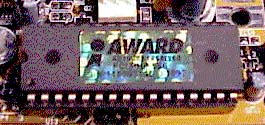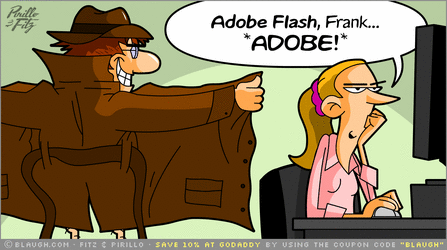Give Your Computer the Boot
March, 2010
By Wayne Maruna
I imagine nearly all of us have wanted to give our computers a good swift kick at one time or another. But of course that is not the sort of ‘boot’ I am talking about. And I’m certainly not talking about throwing out your computer. Good heavens, without my six in-house computers, I would probably have a case of the DTs.
We talk about booting our computers as though everyone knows completely what we are talking about, but did you ever wonder exactly what does happen when you push that power button? We probably don’t give it a second thought; we just feel relieved when the familiar Windows logo appears on the screen and the PC behaves as expected. But actually there’s some pretty neat science going on behind the green curtain.
 When
you press that power button, you are activating a process that was originally
called bootstrapping. According to the Wikipedia, the term is
often attributed to Rudolph Erich Raspe’s story, “The Surprising Adventures of
Baron Munchausen”, where the main character pulls himself out of a swamp, though
it’s disputed whether it was done by his hair or by his bootstraps. (How
apropos - how many among us have pulled out our hair trying to get our computers
to boot up?!) Thus was born the expression “to pull oneself up by one’s
bootstraps”.
When
you press that power button, you are activating a process that was originally
called bootstrapping. According to the Wikipedia, the term is
often attributed to Rudolph Erich Raspe’s story, “The Surprising Adventures of
Baron Munchausen”, where the main character pulls himself out of a swamp, though
it’s disputed whether it was done by his hair or by his bootstraps. (How
apropos - how many among us have pulled out our hair trying to get our computers
to boot up?!) Thus was born the expression “to pull oneself up by one’s
bootstraps”.
Bootstrapping then was the term given to the technique by which a simple computer program activates a more complicated system of programs. The term was shortened to “booting” and the verb ‘boot’ was similarly derived.
When the power button is pressed, an integrated circuit on the motherboard known as the BIOS chip goes into action. The chip contains that simple program called the BIOS, which stands for Basic Input Output System. While only a handful of companies make the BIOS chips found on home computers, each chip’s instruction set is custom engineered for that model motherboard, which is the main circuit board into which all other electronic circuits plug. The BIOS contains user configurable instructions to deal with specific on-board circuits, giving it the ability to turn on or off certain functionalities, as well as establish date and time.
The BIOS includes instructions on how to load basic computer hardware. To insure the hardware is available and functioning, it performs a hardware check, referred to as a POST, which stands for Power On Self Test. This tests various parts of the hardware to insure proper operation before allowing a hand-off to the operating system (i.e. Windows). If it finds something not to its liking, it will either deliver an on-screen message, such as ‘keyboard missing,’ or if it cannot produce video output it will signal via a series of beeps, called a beep code, which can be associated with the specific hardware failure, typically a memory or video error.

Once the POST has completed successfully, the BIOS will initiate the ‘boot loader’, which reads the boot sector (the ‘Master Boot Record’) typically found on the first track of the first hard disk. Once found, the BIOS’s job is complete and it passes over control of the computer to what is called the operating system, which on a home PC is typically Windows, Linux, or Apple’s OS.
The BIOS is configurable by the user if so desired. I will typically go into a computer’s BIOS to insure that the boot priority is set the way I like. This means that I tell it to first look for a floppy drive with an operating system on it (usually DOS), and if none is found, then look next to any installed optical drives – CD or DVD – and only if it finds no OS there, then look for the operating system on the hard drive, which is the typical place to keep the system’s primary operating system. In the BIOS I can also change the on-board hardware I choose to use. For example, most new machines come with sound functionality and Ethernet connectivity built into the motherboard. But there may be reason to use add-in devices to handle these chores, so one can use the BIOS options to disable on-board circuitry.
As time passes and new capabilities are needed, most computer manufacturers provide BIOS updates which can be downloaded and applied to the BIOS chip. This process used to be referred to as ‘flashing the BIOS’ – no raincoat needed – which harkens back to the days when you used a flash of ultraviolet light to effect the change to the BIOS instructions. Thankfully the process is much more user friendly, though it is still not for the faint of heart and not recommended unless really needed, due to the risk of making your computer unbootable.

So there you go. If you’re surprised to find everything you put into motion when you push that power button, just try pushing someone’s ‘hot button’ and watch what happens!
